Home>Technology>Home Entertainment Systems>What Is Primetime Television?


Home Entertainment Systems
What Is Primetime Television?
Modified: January 9, 2024
Learn about Primetime Television and how it enhances your home entertainment systems. Find out what makes it a must-have for ultimate viewing pleasure.
(Many of the links in this article redirect to a specific reviewed product. Your purchase of these products through affiliate links helps to generate commission for Storables.com, at no extra cost. Learn more)
Introduction
Welcome to the exciting world of primetime television! Whether you are a dedicated couch potato or a casual viewer, chances are you’ve heard the term “primetime” thrown around in discussions about your favorite shows. But what exactly does it mean? In this article, we’ll delve into the fascinating realm of primetime television, exploring its definition, historical background, characteristics, programming, audience and advertising, and the challenges it faces in today’s ever-evolving media landscape.
Primetime television refers to the hours during the evening when networks and cable channels broadcast their most popular and anticipated programs. It’s that sweet spot in the TV schedule when viewers are most likely to be at home, ready to unwind, and indulge in their favorite shows. Traditionally, primetime television runs from 8:00 PM to 11:00 PM, but the exact time slot can vary depending on the region and network.
The concept of primetime television dates back to the early days of television broadcasting. In the 1950s and 1960s, networks realized that they could attract larger audiences and, subsequently, more advertising revenue by airing their best content during these peak viewing hours. This led to the establishment of a primetime programming schedule, which still holds true to this day.
Primetime television is characterized by a variety of factors that distinguish it from other time slots. First and foremost, it’s a highly competitive time frame, with networks vying for viewership and ratings supremacy. As a result, primetime shows tend to be of higher production value, with bigger budgets, star-studded casts, and top-tier writing and directing talent.
Moreover, primetime television is known for its diverse range of genres and formats. From thought-provoking dramas and gripping crime thrillers to hilarious sitcoms and reality competitions, there’s something for everyone during these few hours of prime TV programming. Networks strategically schedule different types of shows to cater to different audience demographics and maximize viewership.
Audience and advertising play a crucial role in the success of primetime television. Networks rely on ratings to determine a show’s popularity and, consequently, its renewal prospects. Viewer numbers during primetime often influence the advertising rates for commercial breaks, making it a sought-after slot for advertisers looking to reach a large and engaged audience.
Key Takeaways:
- Primetime television, from its historical roots to its modern challenges, remains a cornerstone of the entertainment industry, captivating audiences with high-quality programming and prime advertising opportunities.
- Streaming services have revolutionized the primetime landscape, reshaping viewing habits, influencing programming decisions, and challenging traditional networks with original content and flexible release formats.
Read more: What Is Television
Definition of Primetime Television
Primetime television refers to the designated time slot during the evening when the most popular and highly anticipated programs are aired by networks and cable channels. It is the period when viewership is expected to be at its peak, typically between the hours of 8:00 PM and 11:00 PM. However, the specific timing may vary depending on the region and the network.
This time slot is considered prime because it targets a large audience who are likely to be available and ready to watch television after their work or daily activities. Networks strategically schedule their highest-rated and most compelling shows during this time to attract maximum viewership, which in turn boosts their advertising revenue.
Primetime television serves as a platform for networks to showcase their highest quality content, often with bigger budgets and production values compared to other time slots. It represents a golden opportunity for broadcasters to captivate audiences and generate a loyal fan base through engaging storytelling and high-quality programming.
While the exact definition of primetime can vary across countries and networks, the underlying concept remains the same. It is a designated window of time when networks have the potential to reach a large segment of the population and retain their attention, making it a critical period for the television industry.
Traditionally, primetime television was dominated by the major broadcast networks such as ABC, CBS, NBC, and Fox. These networks would program their most popular shows during this time, aiming to secure the largest viewership and attract advertisers.
In recent years, with the rise of streaming services and the fragmentation of the television landscape, the definition of primetime has become more fluid. Online platforms like Netflix, Amazon Prime Video, and Hulu have introduced the concept of “binge-watching,” allowing viewers to watch shows on-demand at their own convenience. As a result, the traditional notion of a specific primetime slot has expanded, and audiences now have the flexibility to watch their favorite shows whenever they choose.
Despite these changes, primetime television remains a vital part of the television industry. It serves as a platform for networks to showcase their flagship programs, generate a loyal audience base, and attract advertisers who are willing to pay a premium for prime advertising slots. Whether it’s a gripping drama series, a laugh-out-loud sitcom, or an intense reality competition, primetime television continues to captivate audiences and shape the cultural landscape.
Historical Background
The concept of primetime television has its roots in the early days of television broadcasting. In the 1950s and 1960s, television sets began to gain popularity in households across America, and networks quickly recognized the potential to capture a larger audience during specific time slots in the evening.
During this era, televisions were predominantly black and white and had limited programming options. Broadcast networks like ABC, CBS, and NBC sought ways to attract viewers and compete for advertising revenue. They discovered that airing their best and most enticing content during the evenings, when people were typically at home, could help drive viewership and increase revenue. Thus, primetime television was born.
In the early days, primetime television consisted of a mix of genres, including drama, comedy, variety shows, and live performances. Shows like “I Love Lucy,” “The Ed Sullivan Show,” and “The Twilight Zone” became household names and were eagerly anticipated by viewers each week.
As television technology advanced and color programming became more prevalent, the popularity of primetime television continued to grow. Networks invested in producing high-quality content with notable talent, pushing the limits of creativity and storytelling. Iconic shows like “M*A*S*H,” “Friends,” and “The Sopranos” cemented their place in television history and further solidified the importance of primetime.
Throughout the decades, primetime television played a significant role in shaping popular culture. It introduced audiences to memorable characters, tackled social issues, and provided a shared viewing experience for families and friends. Watercooler conversations revolved around the latest plot twists, cliffhangers, and memorable moments that unfolded during primetime.
However, with the advancement of technology and the introduction of cable television, the television landscape began to change. Cable networks like HBO and Showtime started producing original programming that competed directly with the broadcast networks’ primetime offerings. This further diversified the primetime lineup and expanded the range of options available to viewers.
In recent years, the rise of streaming services has disrupted the traditional notion of primetime television. Platforms such as Netflix, Amazon Prime Video, and Hulu offer viewers the flexibility to watch shows at their own convenience, blurring the lines between primetime and other time slots. The binge-watching phenomenon has transformed audience viewing habits, allowing them to consume entire seasons of shows in one sitting rather than waiting for the weekly primetime episode.
Despite these changes, primetime television remains a vital part of the television landscape. Networks continue to invest in producing high-quality content, securing top talent, and captivating audiences during the coveted primetime hours. It continues to be a cultural touchstone, bringing people together to share in the excitement and anticipation of their favorite shows.
Characteristics of Primetime Television
Primetime television is known for its distinct characteristics that set it apart from other time slots. These features contribute to the allure and popularity of primetime programming, attracting a wide audience and generating high viewership numbers. Let’s explore some of the key characteristics that define primetime television.
1. High Production Value: Primetime shows often have larger budgets and higher production values compared to shows airing at other times. Networks invest significant resources in order to create visually stunning and captivating programs that can compete for viewers’ attention. This includes hiring top talent, utilizing advanced production techniques, and creating elaborate sets and costumes.
2. Compelling Storytelling: Primetime television excels in offering compelling narratives that keep viewers hooked week after week. Whether it’s an edge-of-your-seat drama, a gripping crime thriller, or a captivating mystery, primetime shows are known for their ability to captivate audiences with engaging storylines that are carefully crafted to draw viewers in and keep them invested.
3. Varied Genres and Formats: Primetime television features a wide range of genres and formats to cater to diverse audience preferences. From thought-provoking dramas and side-splitting sitcoms to thrilling action series and reality competitions, there is something for everyone during primetime. Networks strategically schedule different types of shows to target specific demographics and maximize viewership.
4. Top Talent and Celebrity Casts: Primetime shows often boast A-list actors, renowned directors, and talented writers. Networks strive to attract the best talent in the industry to bring their shows to life. Having recognizable names and celebrity casts can draw in viewers and create buzz around a show, increasing its chances of success.
5. Appointment Viewing: Appointment viewing, or tuning in at a specific time to watch a show, is a significant characteristic of primetime television. Unlike on-demand platforms, where viewers can watch shows at any time, primetime programming fosters a sense of anticipation and encourages audiences to tune in together. This shared viewing experience contributes to watercooler discussions and social media buzz.
6. Prime Advertising Opportunities: Primetime television offers prime advertising opportunities for companies looking to reach a large and engaged audience. Advertisers are willing to invest significant amounts of money to secure commercial spots during popular primetime shows, as they know their message will be seen by a substantial number of viewers. This results in higher advertising rates during primetime slots.
7. Influence on Pop Culture: Primetime television has a significant influence on popular culture. Memorable characters, catchphrases, and plot twists from primetime shows often become ingrained in the collective consciousness, shaping conversations and trends. Primetime shows can become cultural touchstones, generating fan communities and sparking discussions that extend beyond the screen.
These characteristics collectively contribute to the appeal and success of primetime television. Networks recognize the importance of creating high-quality content that captures the attention of viewers and keeps them coming back for more. By offering diverse genres, compelling storytelling, and top talent, primetime television continues to be a cornerstone of the television industry.
Programming in Primetime
Primetime television is renowned for its diverse and captivating programming lineup. Networks carefully curate their schedule during this coveted time slot to attract a wide audience and maximize viewership. Let’s take a closer look at the types of shows and programming that dominate primetime television.
1. Drama Series: Dramas are a staple of primetime television, encompassing a wide range of genres, including crime, medical, legal, and period dramas. These shows typically feature complex characters, intricate storylines, and high production values. Examples of popular primetime drama series include “Grey’s Anatomy,” “Breaking Bad,” and “Game of Thrones.”
2. Sitcoms and Comedy Series: Sitcoms and comedy series provide a light-hearted and humorous escape for viewers during primetime. These shows focus on delivering laughs through witty dialogue, relatable characters, and comedic situations. Beloved sitcoms such as “Friends,” “The Big Bang Theory,” and “Parks and Recreation” have become synonymous with primetime television.
3. Reality TV: Reality television has gained immense popularity during primetime slots. These shows offer unscripted entertainment and often revolve around competitions, talent showcases, or glimpses into the lives of celebrities. Examples of successful primetime reality TV shows include “The Voice,” “Survivor,” and “The Bachelor.”
4. Crime and Legal Dramas: Crime and legal dramas have found a significant audience during primetime slots. These shows explore the world of law enforcement, investigations, and courtroom proceedings. They often feature compelling storylines, intricate mysteries, and intense performances. Notable examples include “Law & Order,” “CSI: Crime Scene Investigation,” and “The Good Wife.”
5. Thrillers and Suspense Series: Thriller and suspense series make for gripping primetime programming, offering viewers edge-of-their-seat excitement and unpredictable plot twists. These shows keep audiences engaged with compelling narratives, intricate puzzles, and tension-filled storytelling. Primetime thrillers like “Breaking Bad,” “Homeland,” and “Stranger Things” have garnered critical acclaim and devoted followings.
6. Live Events and Specials: Networks often schedule live events and specials during primetime television to capture a large audience. This can include award shows, sports events, live concerts, and political debates. These events provide a shared viewing experience and generate a buzz among viewers. Examples include the Super Bowl halftime show, the Academy Awards, and the Olympic Games coverage.
7. Limited Series and Event Programming: Limited series and event programming have become increasingly popular during primetime television. These shows typically span a defined number of episodes, allowing for concise storytelling and high production values. Limited series like “Chernobyl,” “Big Little Lies,” and “The Queen’s Gambit” have garnered critical acclaim and captured the attention of viewers.
Networks strategically plan their primetime schedule to cater to various audience interests and demographics. They carefully balance drama, comedy, reality TV, and other genres to appeal to a wide range of viewers. Additionally, they strategically position their most anticipated shows and premieres to draw in audiences and build a loyal fan base.
Overall, programming in primetime television encompasses a diverse range of genres and formats, all aiming to captivate viewers and provide an enjoyable and engaging viewing experience. From intense dramas to hilarious comedies and unscripted reality competitions, primetime television offers something for everyone.
Primetime television refers to the time slot when the highest viewership is expected, typically between 8-11pm. It’s when networks air their most popular and anticipated shows, making it a prime opportunity for advertisers to reach a large audience.
Read more: What Is On Television Tonight?
Audience and Advertising
Primetime television holds a special place in the hearts and minds of both audiences and advertisers alike. The combination of a large, engaged viewership and prime advertising opportunities has made it a highly sought-after time slot for networks and brands. Let’s explore the relationship between the audience and advertising in the realm of primetime television.
Audience: Primetime television targets a broad audience that typically encompasses various demographics. This time slot appeals to individuals who have finished their daily activities and are ready to relax and unwind in front of the television. Families, young adults, and older viewers tend to make up a significant portion of the primetime audience.
Networks rely on Nielsen ratings to gauge the popularity of primetime shows and determine their viewership. These ratings provide vital insights into the number of people watching a particular program during its initial airing, as well as information about the demographics of the audience, such as age, gender, and household income.
Advertisers greatly value the sizable primetime audience due to its potential for high reach and engagement. A large viewership means a greater likelihood of their product or service being seen by a substantial number of people, which can translate into increased brand recognition and sales.
Advertising: Advertising during primetime television is considered a prime opportunity for brands to showcase their products or services to a receptive and engaged audience. Advertisers place a premium on commercial slots during primetime due to the favorable environment and high viewership numbers.
During commercial breaks in primetime shows, advertisers have the chance to capture viewers’ attention and deliver their messaging effectively. Research shows that primetime viewers are more focused and less likely to skip or tune out during commercials compared to other time slots, making it a valuable advertising investment.
To maximize impact, advertisers often create captivating and memorable advertisements specifically tailored to the primetime audience. These ads may be humorous, emotional, or feature notable celebrities, aiming to leave a lasting impression and connect with viewers on an emotional level.
Networks and advertisers work closely together to optimize ad placements during primetime. The popularity and demand for advertising during this time slot result in higher advertising rates, which generate significant revenue for networks. The revenue generated from advertising helps fund the production and acquisition of high-quality content that attracts viewers to primetime programming.
In recent years, the rise of technology and streaming services has led to changes in advertising within primetime television. Digital advertising and targeted ads have become more prevalent, offering advertisers ways to reach audiences beyond traditional broadcast television. Streaming platforms also incorporate ads into their programming, allowing advertisers to target specific shows or genres popular during primetime.
Overall, the symbiotic relationship between the audience and advertising in primetime television creates a dynamic ecosystem. Networks strive to produce compelling content that attracts a large and engaged viewership, while advertisers capitalize on this captive audience to promote their products and services. It’s a win-win situation that continues to drive the success and profitability of primetime television.
Primetime Television vs. Other Time Slots
Primetime television holds a unique position in the programming schedule, offering distinct advantages and differences compared to other time slots. Let’s examine the contrasts between primetime and other periods in the television lineup, such as daytime and late-night programming.
Viewership: One of the primary differences between primetime television and other time slots is the size and composition of the audience. Primetime attracts a larger viewership due to its convenient evening hours, when most people are relaxing at home after work or school. In contrast, daytime programming caters to individuals who are at home during the day, such as stay-at-home parents, retirees, and those with flexible work schedules. Late-night programming targets night owls, shift workers, and individuals looking for entertainment during the late hours.
Content: Another distinction lies in the type of content offered during each time slot. Primetime television often showcases high-budget dramas, popular sitcoms, and reality competitions that have broader appeal and capture a wide range of demographic groups. Daytime programming typically includes talk shows, game shows, soap operas, and lifestyle shows that cater to specific target audiences, such as homemakers, retirees, or students. Late-night programming tends to include talk shows, variety programs, and comedic sketches that have a more niche appeal and cater to the late-night audience.
Advertising: Advertising during primetime is highly sought after due to the large and engaged audience. Advertisers are willing to pay a premium for commercial slots during primetime to ensure their message reaches a significant number of viewers. Daytime programming also attracts advertisers looking to target specific audiences, such as household products during daytime talk shows or educational toys during children’s programming. Late-night programming advertisements often cater to a more niche market, focusing on products and services relevant to the late-night audience.
Competition: Primetime slots are highly competitive, as networks vie for viewership and ratings supremacy during this coveted time period. Networks often schedule their top-rated shows to go head-to-head in the primetime lineup, resulting in fierce competition among networks. In contrast, daytime and late-night programming typically have less head-to-head competition, allowing for a wider variety of shows and greater flexibility in scheduling.
Cultural Impact: Primetime shows have a more significant cultural impact compared to other time slots. They often become cultural touchstones, captivating audiences and sparking watercooler conversations. Primetime shows have a broader reach and influence on popular culture, introducing iconic characters, catchphrases, and storylines that resonate with viewers. While daytime and late-night programming can still have devoted followings and cultural relevance, they generally have a more limited reach and impact.
Viewer Behavior: Viewership behavior differs across time slots. Primetime television tends to attract more attentive viewers who are actively seeking out specific shows and engaged in the viewing experience. Daytime programming may have more passive viewers who have the television on in the background while going about their daily activities. Late-night programming often attracts viewers who are seeking entertainment during the evening hours or are specifically interested in the content or host of the late-night show.
In summary, primetime television stands out from other time slots due to its larger viewership, high-stakes competition, and cultural impact. It offers a diverse array of popular and high-budget programming that appeals to a broad audience. While daytime and late-night programming have their own unique characteristics and target specific audiences, primetime remains the pinnacle of television programming, capturing the attention of viewers and advertisers alike.
Challenges and Evolution in Primetime Television
Primetime television, like any other industry, has faced its fair share of challenges and undergone significant evolution over the years. Let’s explore some of the key challenges and changes that have shaped the landscape of primetime television.
1. Fragmentation of Viewership: With the advent of streaming platforms and on-demand services, viewership has become increasingly fragmented. Audiences now have more choices beyond traditional broadcast primetime. They have the flexibility to watch shows at their convenience, binge-watching entire seasons in one sitting. This shift has led to a decline in live viewership and an increase in delayed and on-demand viewing, requiring networks to adapt their strategies accordingly.
2. Rise of Streaming Services: Streaming services such as Netflix, Amazon Prime Video, and Hulu have disrupted the traditional television landscape. These platforms offer original content, often released all at once, bypassing the traditional weekly release format. They have also attracted top talent and produced critically acclaimed shows, challenging the dominance of broadcast networks in primetime. This has led to increased competition and the need for networks to ramp up their own streaming platforms to reach and retain viewers.
3. Shift in Advertising Models: The rise of streaming services and digital platforms has also led to changes in the advertising ecosystem. Traditional commercial breaks in primetime programming are being challenged by targeted ads, product placements, and interactive advertising experiences. Advertisers are finding new ways to engage viewers and deliver their messages effectively in an increasingly ad-averse landscape.
4. Audience Diversification: The primetime television audience has become more diverse. Networks now strive to appeal to a broader range of demographics, with a focus on inclusivity and representation. There is a growing demand for shows that accurately reflect the diverse experiences of viewers, whether by featuring diverse casts, exploring different cultural backgrounds, or addressing social issues. Networks must navigate this evolving audience landscape to keep their programming relevant and engaging.
5. Embracing Digital and Social Media: The proliferation of digital platforms and social media has given rise to new ways for audiences to engage with and discuss primetime shows. Viewers can connect with each other in real-time while watching programs, share their reactions on social media, and engage in online communities and fan forums. Networks have adapted by creating official show hashtags, providing online exclusive content, and encouraging live interaction with cast members during episodes.
6. Influencer Marketing: With the rise of social media, influencer marketing has become an essential strategy for promoting primetime television shows. Networks collaborate with influencers and celebrities who have a significant following and influence online. These influencers create buzz around the show, generate excitement among their followers, and encourage them to tune in. This form of marketing has proven effective in reaching younger demographics and expanding the reach of primetime programming.
7. Addressing Changing Viewership Habits: The shift in viewership habits and the rise of streaming services have forced networks to adapt their strategies. To accommodate binge-watching and on-demand viewing, some networks now release entire seasons at once or make episodes available for streaming shortly after their initial broadcast. This approach allows networks to stay relevant and cater to the preferences of modern viewers.
Despite these challenges, primetime television continues to be a significant force in the industry. Networks are continually evolving their strategies, embracing new technologies, and investing in high-quality content to maintain their relevance in the ever-changing media landscape. By understanding and addressing the challenges and demands of the audience, primetime television can continue to captivate viewers and shape the future of entertainment.
Impact of Streaming Services on Primetime Television
Streaming services have had a profound impact on primetime television, revolutionizing the way audiences consume content and challenging the traditional television landscape. Let’s explore the significant ways in which streaming services have influenced primetime television.
1. Changing Viewing Habits: Streaming services have disrupted the traditional primetime viewing experience by offering on-demand content. Audiences now have the freedom to watch their favorite shows whenever and wherever they choose, breaking away from the constraint of scheduled primetime programming. This has resulted in a shift from appointment viewing to binge-watching entire seasons in one sitting.
2. Original Content and Competition: Streaming services such as Netflix, Amazon Prime Video, and Hulu have entered the original programming arena, producing high-quality content that rivals broadcast networks. These platforms have invested heavily in creating their own original shows with top talent, often released in their entirety, which has challenged the dominance of traditional primetime networks.
3. Global Reach: Streaming services have facilitated the global distribution of content, allowing viewers around the world to access and enjoy primetime shows from different regions. This global reach has led to increased diversity in programming and the opportunity for international viewers to discover and engage with primetime shows they may not have had access to before.
4. Flexible Release Formats: Unlike traditional primetime shows that follow a set weekly schedule, streaming services have introduced flexible release formats. They may release entire seasons at once, allowing viewers to binge-watch the entire series. Alternatively, they might release episodes on a weekly basis, mimicking the traditional primetime experience. This flexibility caters to the preferences of different viewers, further influencing how content is consumed.
5. Influence on Programming Decisions: The success and popularity of streaming services and their original content have influenced programming decisions in traditional primetime networks. Broadcast networks have adopted elements from streaming platforms, such as embracing shorter, limited series or releasing content for streaming immediately after it airs on television. Networks have also shifted their focus to producing binge-worthy shows that can compete with the allure of streaming platforms.
6. Targeting Niche Audiences: Streaming services have recognized the benefit of catering to specific niche audiences by producing content that appeals to their unique interests. This has led to a rise in specialized and niche genres, offering viewers a wider range of options beyond what traditional primetime television typically provides. Streaming platforms have given a platform for shows that may not have found a home in traditional primetime programming, allowing for greater diversity in storytelling.
7. Shift in Advertising Landscape: The rise of streaming services has also had a significant impact on the advertising landscape for primetime television. Traditional commercial breaks are being challenged as streaming platforms offer options to skip or minimize advertising. Advertisers are adapting by utilizing targeted advertising or integrating their brand directly into the content, such as through product placements or partnerships with streaming platforms.
In summary, streaming services have reshaped the primetime television landscape by changing viewing habits, challenging traditional networks with original content, and introducing flexible release formats. They have influenced programming decisions, expanded the reach of primetime shows globally, and prompted shifts in the advertising landscape. Streamers have given viewers more control over their content consumption and provided a platform for diverse storytelling. As streaming services continue to evolve and innovate, they will undoubtedly have a lasting impact on primetime television and the way audiences engage with their favorite shows.
Read more: What Are The Disadvantages Of Television
Conclusion
Primetime television holds a special place in the entertainment industry, captivating audiences with high-quality programming during peak viewing hours. Throughout its history, primetime television has evolved, faced challenges, and adapted to meet the changing needs and preferences of viewers. Streaming services have emerged as a significant disruptor, transforming the primetime landscape and dramatically impacting how audiences consume their favorite shows.
From its inception in the early days of television to its current state, primetime television has been defined by characteristics such as high production value, compelling storytelling, and a diverse range of genres. Networks strategically program their most popular shows during primetime, aiming to attract a large and engaged audience. Advertisers recognize the value of reaching this captive audience and are willing to invest in prime advertising slots during these hours.
However, streaming services have revolutionized the way audiences watch and engage with content. The flexibility to stream shows at any time and the availability of original programming from streaming platforms have dramatically shifted viewing behaviors. Audiences have moved away from appointment viewing, embracing binge-watching entire seasons at their own pace. This change has redefined the traditional notion of primetime and challenged broadcast networks to adapt to the evolving landscape.
The impact of streaming services on primetime television extends beyond changing viewing habits. Streaming platforms have become major competitors in the production of original content, attracting top talent and delivering critically acclaimed shows. They have also influenced programming decisions and provided a platform for niche genres and diverse storytelling.
Despite the challenges presented by streaming services, primetime television continues to play a vital role in the television industry. Networks strive to produce compelling content, engage with audiences on digital platforms, and adapt their advertising strategies. Traditional broadcast networks have also embraced streaming and on-demand services, recognizing the importance of reaching viewers beyond the constraints of scheduled programming.
In conclusion, primetime television remains a prominent force in the entertainment world, captivating audiences with captivating stories, high production values, and diverse programming. While streaming services have introduced new dynamics and reshaped the viewing landscape, primetime holds its place as a cherished time slot with a loyal audience base. Both traditional networks and streaming platforms will continue to evolve and adapt, ensuring that primetime television remains a cornerstone of the television industry for years to come.
Frequently Asked Questions about What Is Primetime Television?
Was this page helpful?
At Storables.com, we guarantee accurate and reliable information. Our content, validated by Expert Board Contributors, is crafted following stringent Editorial Policies. We're committed to providing you with well-researched, expert-backed insights for all your informational needs.

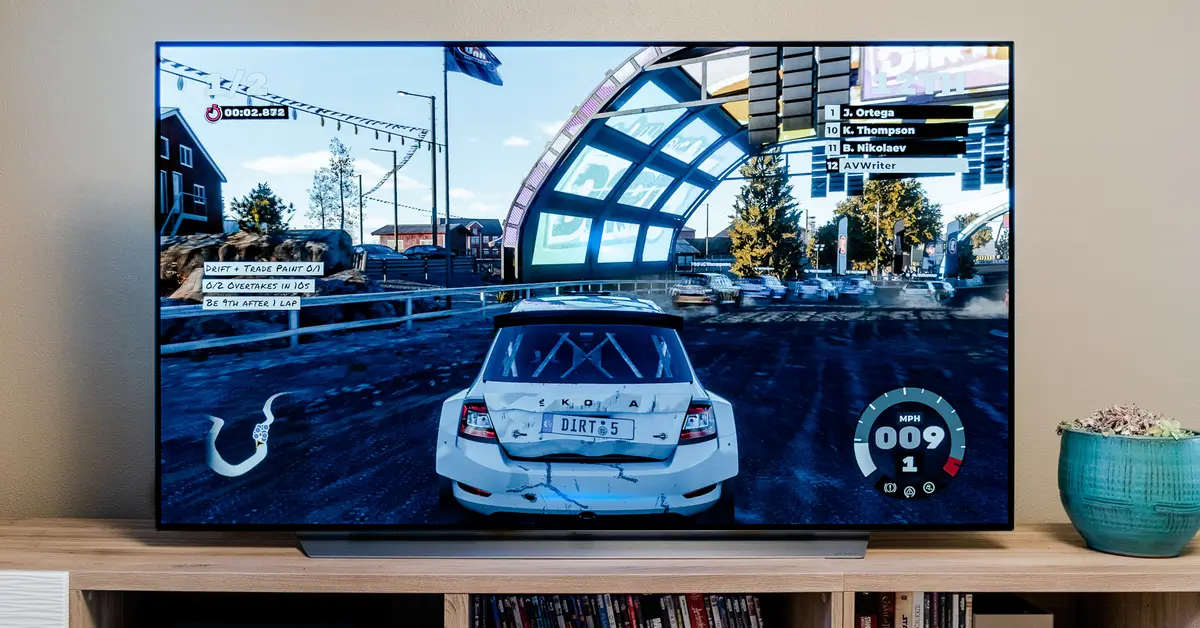

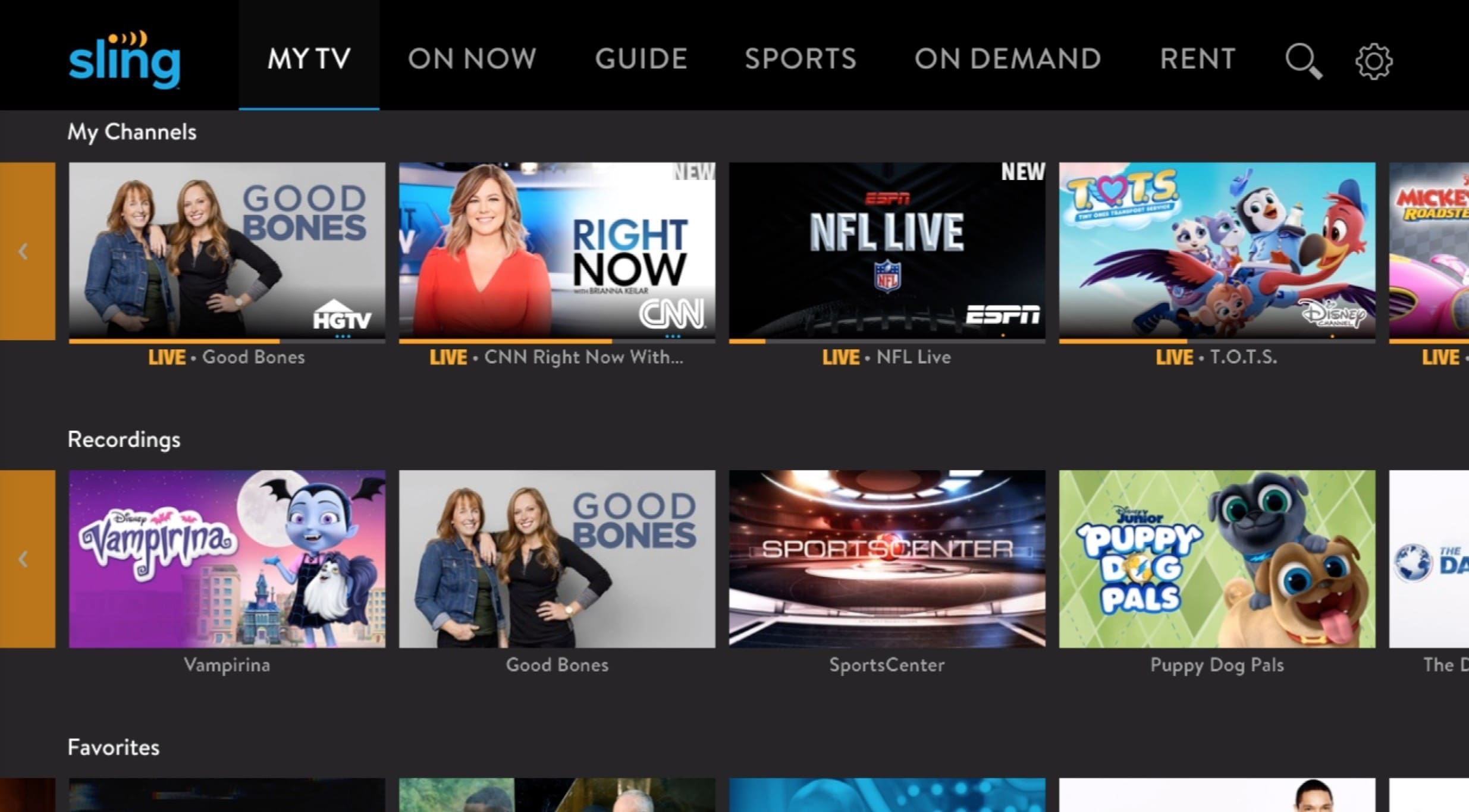

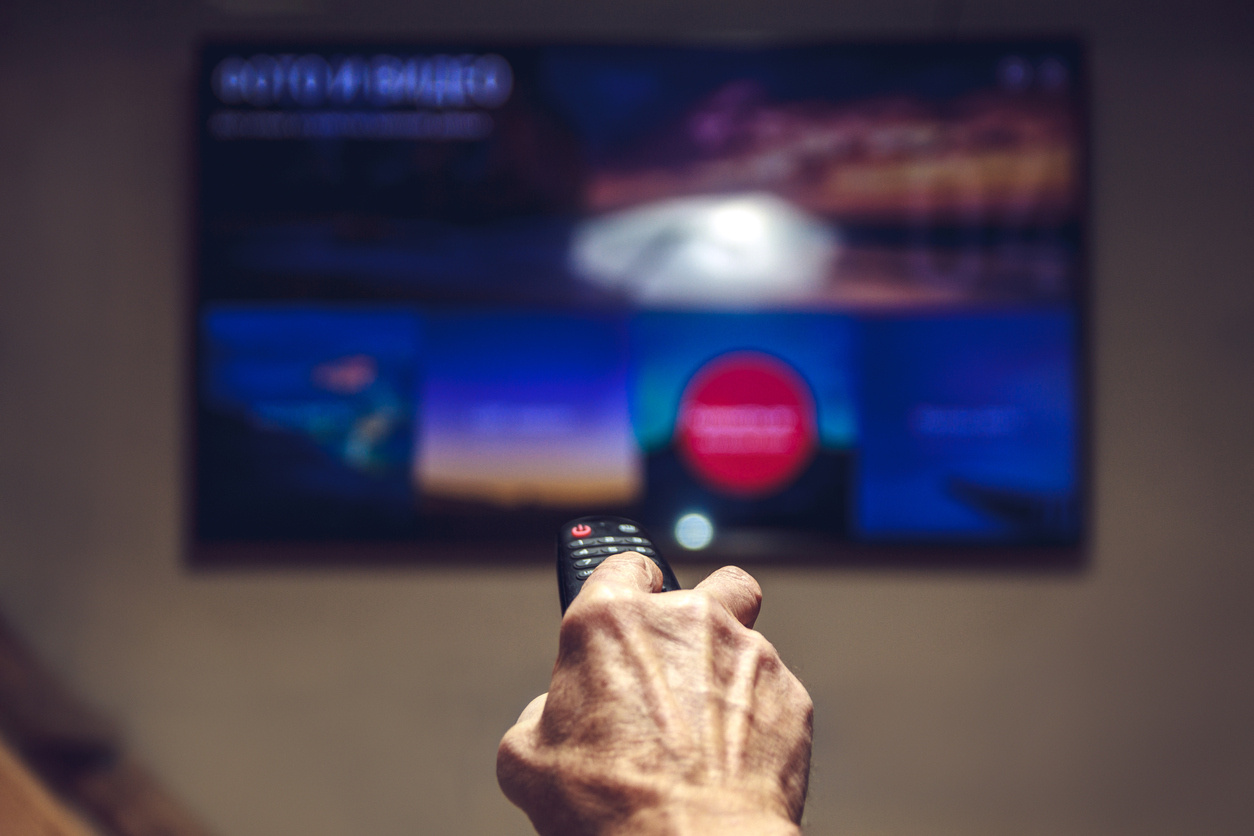
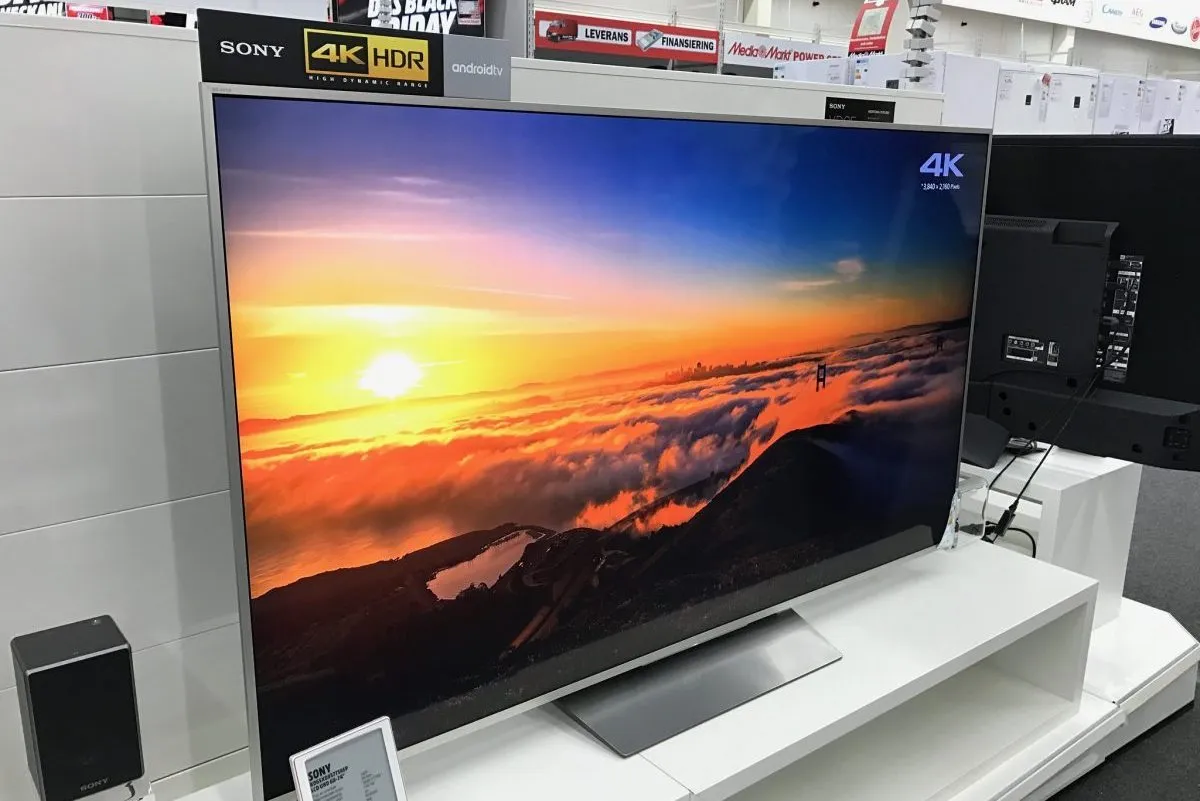




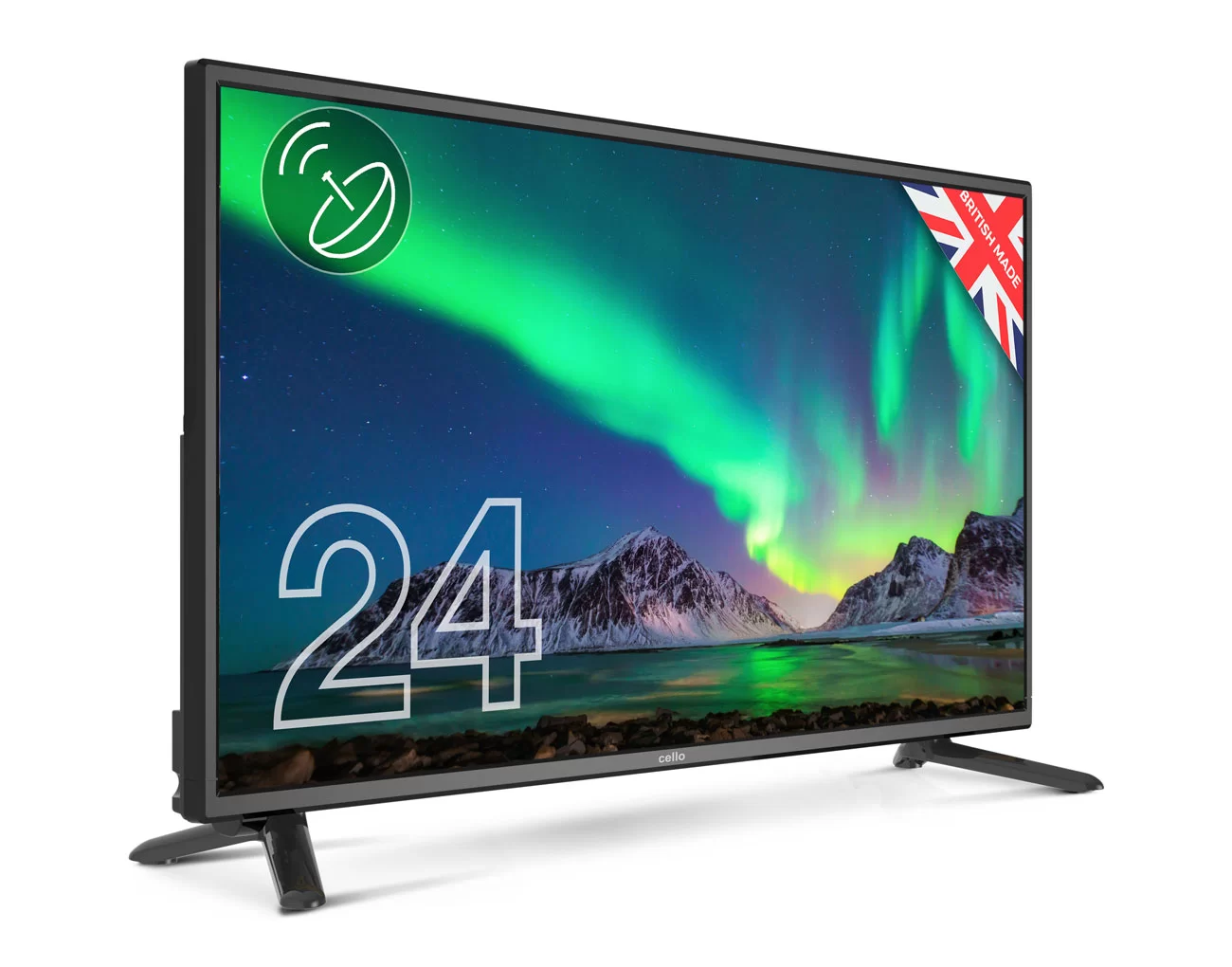


0 thoughts on “What Is Primetime Television?”